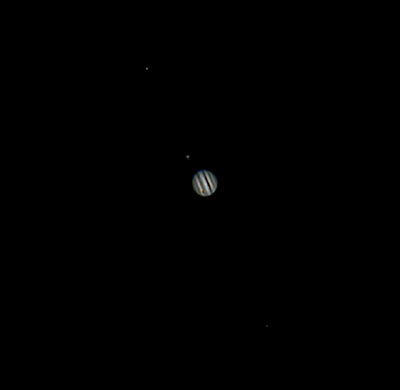As for Jupiter itself, it was shining at an apparent magnitude of -2.07. Europa is the top moon, followed by Io nearest to Jupiter, and Callisto is near the bottom. The great red spot is clearly visible in the image, as are the storm bands. The telescope used was a Celestron Nexstar 6SE.
The general purpose of this blog is to highlight the potential of astronomy and astrophotography in the Coachella Valley, CA and surrounding areas
Saturday, December 19, 2015
Jupiter, Europa, Io, Callisto and the great red spot
This picture is a stacked 3 minute video of Jupiter and 3 of its moons, Europa, Io, and Callisto. The software used includes Avistacks, Astra Image, and Photoshop. I recently came across the "holy grail" of telescope webcams, the Phillips SPC900nc and was blessed with near perfect seeing on 12-18-15 here in Cathedral City California. This webcam is amazing! The amount light it draws in, and the contrast is fantastic. My previous webcam was a Logitech HD c310, and I have to admit that the SPC900nc does a much better job.
As for Jupiter itself, it was shining at an apparent magnitude of -2.07. Europa is the top moon, followed by Io nearest to Jupiter, and Callisto is near the bottom. The great red spot is clearly visible in the image, as are the storm bands. The telescope used was a Celestron Nexstar 6SE.
As for Jupiter itself, it was shining at an apparent magnitude of -2.07. Europa is the top moon, followed by Io nearest to Jupiter, and Callisto is near the bottom. The great red spot is clearly visible in the image, as are the storm bands. The telescope used was a Celestron Nexstar 6SE.
Subscribe to:
Post Comments (Atom)

No comments:
Post a Comment